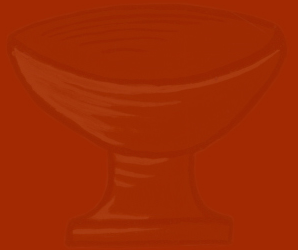
About this icon
The prototype for this ikon was painted by nuns in Serbia who based it on a 15th century ikon from the Ithalo-Creton School (the Italian and Crete School).
St George may be painted as a warrior in full outfit, showing either half or full body. The spear he carries must always carry a cross at the top to show that the dragon could not have been conquered without divine assistance.
The hand shown in the top corner blesses the scene and shows the help of God in slaying the dragon.
The red cape represents the martyrdom of St George.
The horse is usually white. The knotted tail is taken from Roman practice. The tail was knotted on the return from battle to show all that the army had been victorious.
St George is never shown in this scene with intention. He must be serene, as must the dragon, to show that the slaying of the dragon was with divine assistance. St George is always shown as a relatively young man with big curly hair.
The landscape is barren, lunar in presentation, to indicate the barren earthly realm. The black cave, near the tail of the dragon, indicates the presence of the underworld. Caves were focal points of energy. Black is always a reminder of the death of Christ and the cycle of life.
About St George and the Dragon
St George was believed to be a commander of a Roman army unit of 1000 men around the 3rd or 4th century. It is said that he became a Christian during his command and did not immediately disclose this fact to the Emperor. When later he did disclose his faith, the Emperor attempted to reconvert him and when St George refused he was jailed. When jailed his chains fell off and the guards fell asleep presumably to allow St George to escape. He chose not to escape. The wife of the Emperor was so impressed with his new faith that she supported him and asked that the Emperor allow him to live. The Emperor had his wife executed for her support of St. George. St George was executed and made a holy mater because he died defending the Christian faith.
The legend tells us that when marching through Libya, St George came upon a region that had been terrorised by a dragon that lived in the marshes. The people of the region had sacrificed a maiden annually to the beast and that year it was the turn of the princess to be sacrificed. He found the dragon and speared him, releasing the region and particularly the King, Queen and Princess from the terror of the dragon.
In late medieval Christianity, St George (together with St Michael) became the patron of chivalry. In the British honors system, a chivalric order founded in 1818 is also named for these two saints, the Order of Saint Michael and Saint George. St George is celebrated on two dates, the date of his death and the date of his consecration. In the old calendar this was 16 November and 6 May. St George is also called the holy mater.




